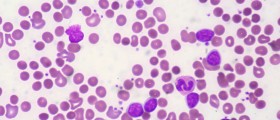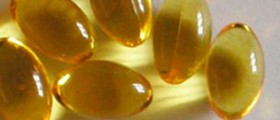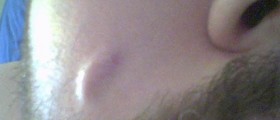
Skin is the major organ of the human body. Its main role is to be an external protection of the internal organs and body systems. Since it is an external organ, it is prone to many disorders due to environmental factors, but also certain internal disease may lead to the occurrence of skin disorders. One of the most common skin disorders is keratosis pilaris. This condition is marked by the appearance of small bumps on the skin. The most common places where keratosis pilaris occurs are the upper arms, legs, thighs and the buttocks.
Keratosis pilaris rubra and keratosis pilaris alba are two common types of this skin condition. However, sometimes this condition can affect the facial skin, particularly the cheeks. This kind of keratosis pilaris is called keratosis pilaris rubra faceii. It is sometimes mistaken for acne.
Causes and symptoms of keratosis pilaris on face
The main cause for the occurrence of this condition is overproduction of keratin. Keratin is a fibrous scleroprotein, which can be found on the outer layer of the skin. When it is overproduced, it can block the hair follicles and cause the outbreak of the small bumps. The most obvious and noticeable symptoms of this skin condition are the small bumps or patches. Therefore, entire cheeks may look red and inflamed. In the majority of cases, the bumps are painless. Furthermore, the people who suffer from facial keratosis pilaris may experience itching of the affected skin, which tends to become very dry and chapped.
Treatment of keratosis pilaris on face
Unfortunately, there is no cure for facial keratosis pilaris, but it can be controlled by certain skin treatments. Many doctors usually prescribe certain medications, such as topical retinoids, ammonium lactate cream and moisturizers that contain urea and topical corticosteroids. These medications are very effective in softening the dry and rough skin. However, they must be applied very gently. Otherwise, the condition may be worsened.
Exfoliation is also recommended in order to control keratosis pilaris, since the dead skin cells should be removed. To successfully treat keratosis pilaris, it is recommended that the skin is kept moisturized always; even a humidifier in the room can help a lot. Furthermore, the people with this skin condition should avoid harsh soaps and cleansers. Lotions with alpha hydroxy acids and beta hydroxy acids, as well as lactic acid are very effective remedies for keratosis pilaris on face.
The diet should be rich in vitamin A, vitamin E and essential fatty acids, particularly omega-3 essential fatty acids and omega-6 fatty acids. Moreover, the affected people should expose the facial skin to sun for about 20 minutes every day.

















Your thoughts on this
Loading...